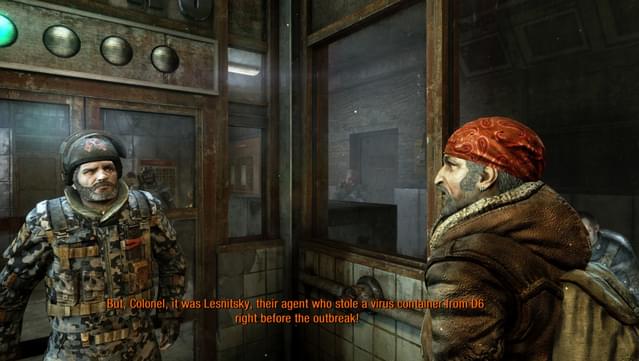Nude Patch Na Metro Last Light
For some developers, the start of a new generation offers an opportunity to wipe the slate clean and deliver experiences previously impossible on last-gen hardware, while for others, the power is finally there to make enhanced versions of their existing tech shine. Just like DICE's Frostbite and Crytek's CryEngine, Techland's Chrome Engine struggled on last-gen systems, but there's the sense that the technology has finally found its feet on PS4 and Xbox One., we established that the Polish developer has sorted out most of its performance issues, but with more game hours under our belt we can better discern how version six of the Chrome Engine operates on the new consoles, and factor in the PC version too. In migrating to the next-generation consoles and PC hardware, Chrome Engine is now in its sixth iteration, with a range of new features added to the mix since the release of its prior outings on the Dead Island titles. Pocket chef 320x240 jar. Most importantly, the team has switched to a physically based materials pipeline, allowing for a realistic depiction of how light interacts with materials, more closely simulating the real world. Dynamic weather is also included, with adjustments to the wetness (or gloss) properties of objects allowing for an expected level of shine as rain falls.
Wapdamcom games for pc. FearLess Cheat Engine. Community Cheat Tables of Cheat Engine. Skip to content. No-Clip for Metro Last Light REDUX. Post by STN » Wed May 10, 2017 9:26 am NoClip.

In addition, light probes are pre-calculated and stored as spherical harmonics for each time of day and weather condition with the engine able to dynamically interpolate between them. The overall look is impressive, if not quite as striking as one might expect, but it's clear that Techland has made huge strides in its transition to this next-gen version of its tech. So let's get down to basics. As we mentioned in our, Dying Light operates at a rendering resolution of 1920x1080 on PS4 while Xbox One is in the region of 1536x1080, with both seemingly using a variant of SMAA T2X anti-aliasing. That's usually one of the best forms of post-process anti-aliasing available but in Dying Light, there are some noticeable 'ghosting' artefacts.
Despite the resolution deficit, image quality is very good on Xbox One - conceivably, this rendering set-up should allow the developers to cram five buffers at 4bpp (bits per pixel) or two FP16 render targets plus depth into the Xbox One's 32MB ESRAM, with a fairly minimal impact on image quality. The PC version, of course, offers full arbitrary resolution support as one would expect. Unfortunately, the only included anti-aliasing option in the PC version closely mirrors the console version, suffering from the same temporal ghosting issues. We've seen some excellent implementations of SMAA, but the ghosting here is too severe to overlook, particularly at 30fps. Some additional AA options would be much appreciated on the PC side.
Alternative comparisons: • • Outside of limited anti-aliasing options, the PC version of Dying Light is reasonably tweakable, with a range of adjustments available including shadow and texture quality, view distance, motion blur, and a pair of Nvidia Gameworks features: HBAO+ and Nvidia depth of field. Crucially, Techland has even provided an adjustable field of view option - something its previous games have lacked. Unfortunately, this option has a pretty noticeable impact on performance, so use it carefully. Curiously, Dying Light includes preliminary Oculus Rift support that is enabled through the game's config file.
